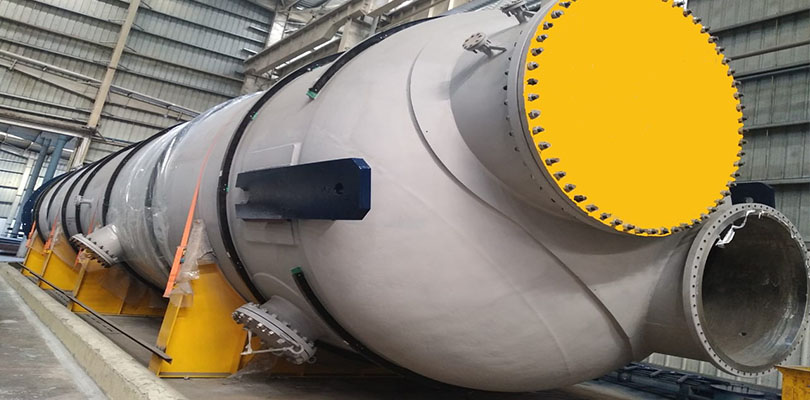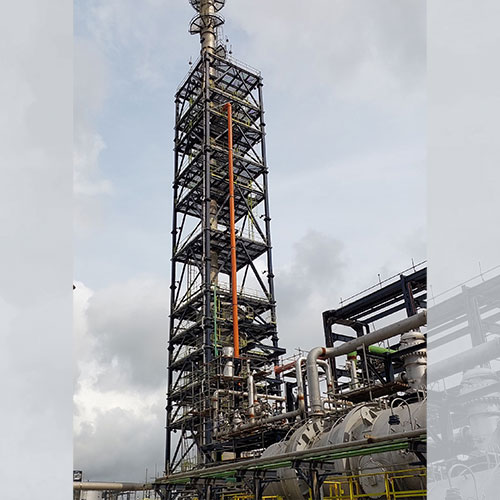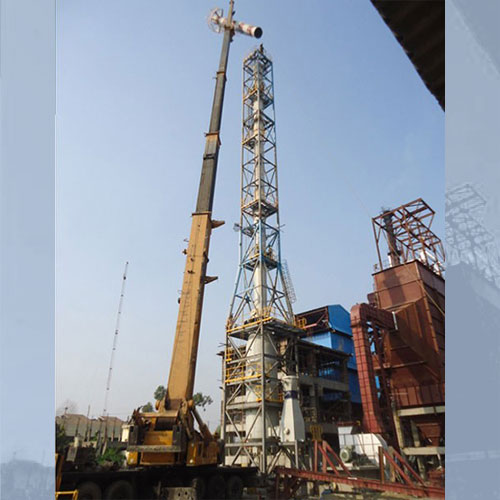Flue Gas Desulphurization System Suppliers In India
Flue Gas Desulfurization (FGD) is a technology used to remove sulfur dioxide (SO2) and other acid gases from the flue gases of industrial processes, particularly from the exhaust of coal-burning power plants, cement kilns, and industrial boilers. The primary goal of FGD is to reduce the emission of sulfur dioxide and mitigate acid rain, as well as reduce the environmental and health impacts associated with sulfur dioxide emissions.

FGD technologies have evolved over the years, resulting in several methods for achieving this goal. Here's an overview of FGD technologies:
1. Wet Flue Gas Desulfurization (Wet FGD):
Limestone-Gypsum Process: This is the most widely used wet FGD technology. It involves the use of a wet scrubber to react flue gas with a slurry of limestone (CaCO3) and water. Sulfur dioxide is absorbed by the slurry, forming calcium sulfite (CaSO3), which is then oxidized to produce calcium sulfate (CaSO4), or gypsum. Gypsum is a valuable byproduct that can be used in construction materials.
Seawater Scrubbing: In some coastal areas, seawater is used as an absorbent in the scrubber instead of limestone. Seawater FGD is a more sustainable option and is often used in locations where limestone availability is limited.
MagneGas Process: This is a variation of the wet FGD process that uses magnesium oxide (MgO) as the absorbent instead of limestone. It offers improved sulfur dioxide removal efficiency.
2. Dry Flue Gas Desulfurization (Dry FGD):
Spray Dryer Absorber (SDA): In the SDA process, a dry powder sorbent, such as hydrated lime (Ca(OH)2) or sodium bicarbonate (NaHCO3), is injected into the flue gas stream. The sorbent reacts with sulfur dioxide, forming solid particles that are collected by particulate control equipment like bag filters or electrostatic precipitators.
Circulating Dry Scrubber (CDS): In this method, a dry sorbent is injected into the flue gas, and the reaction products are collected in a downstream fabric filter.
Dry Sorbent Injection (DSI): DSI involves the injection of a dry sorbent, such as lime or sodium-based sorbents, directly into the flue gas duct. The sorbent reacts with sulfur dioxide and is removed with the fly ash in the particulate control equipment.
3. Circulating Fluidized Bed (CFB) Flue Gas Desulfurization:
This FGD technology uses a CFB reactor to inject sorbent particles (typically limestone or calcium-based sorbents) into the flue gas. The sorbent captures sulfur dioxide, and the reaction products are collected in a downstream particle separator.
Each FGD technology has its advantages and disadvantages, and the choice of FGD method depends on factors such as the specific emissions control requirements, the availability of sorbents, cost considerations, and local environmental regulations. FGD plays a vital role in reducing sulfur dioxide emissions and improving air quality by preventing acid rain and minimizing the environmental and health effects of acid gases.










